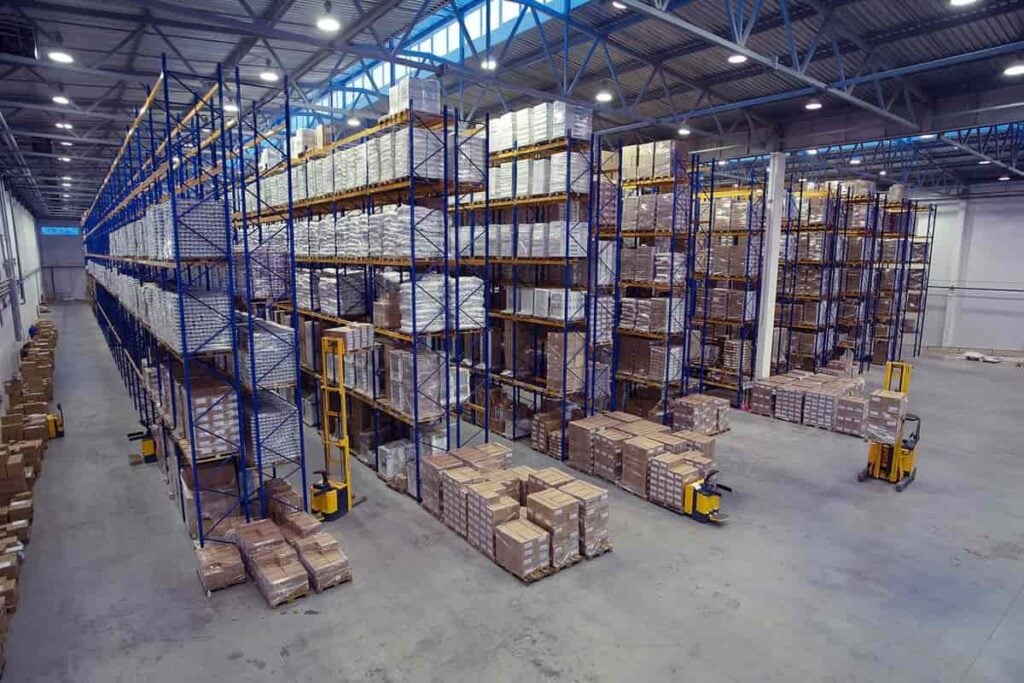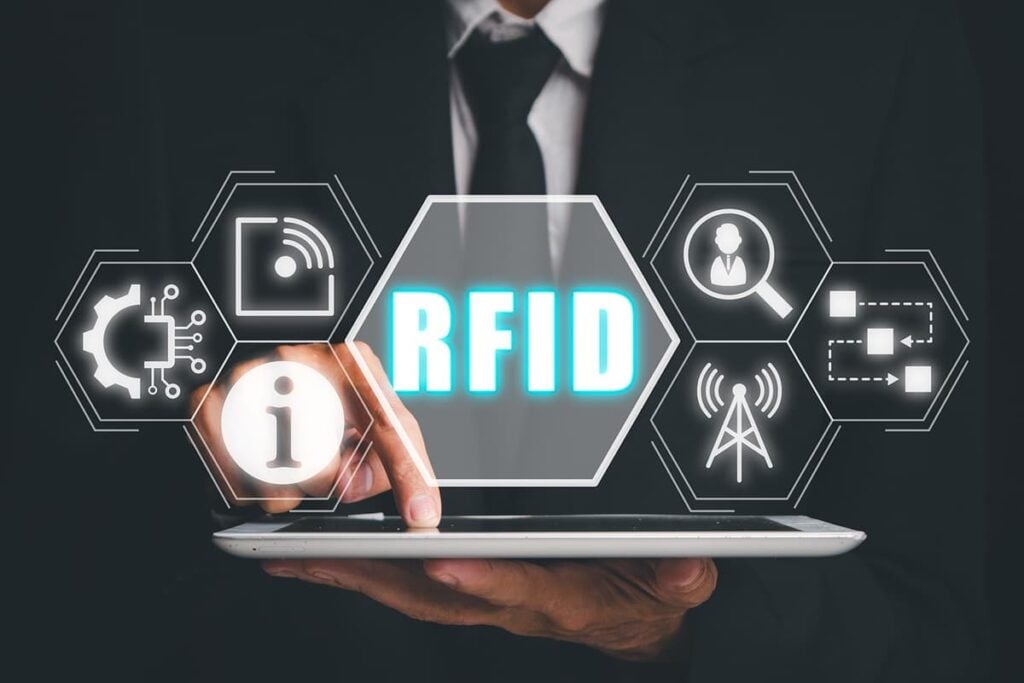Is Symbotic Stock Becoming Any Less Risky?
Table of contents

Copying someone’s investment methodology verbatim doesn’t teach you how to become a better investor. Arriving at your own set of investing rules does. Our own tech investing methodology is a living document that evolves slowly over time in response to the rapidly changing technology domain. In that document, you’ll find numerous “showstoppers,” hard rules which keep us from investing in certain companies. One such rule is heavy customer concentration risk.
Technology stocks are some of the most volatile assets out there, so it makes sense to reduce risk. If you have a company with just one customer, that customer has all the power at the negotiating table. If that sole customer happens to be one of the world’s largest companies, then your position of weakness is even more pronounced. Ditto for the U.S. government. That’s why when we found out Symbotic stock (SYM) had nearly fully committed to Walmart, it was a showstopper we couldn’t look past.
Symbotic Stock and Walmart
There’s another train of thought that says, “having one of the world’s largest companies as your sole customer is a good thing” because it validates your offering. Investors in that camp will be stoked to hear that Walmart, Symbotic’s largest customer, accounted for approximately 88% of their total revenue in fiscal 2023, and for a significant portion of their $23.3 billion backlog. That’s down from 94% in 2022, so the Walmart dependency is on a decline. This begs the question. At what level would the Walmart dependency need to be for us to look past this showstopper?
A small red flag starts when a customer accounts for 10% or more of total revenues. That’s why companies state these risks in their SEC filings. We might be able to look past this up to 30%, provided the remaining 70% is distributed across a pool of customers who don’t account for more than 10% of revenues. However, when a single customer accounts for more than half of all revenues, that’s clearly too much. So, we might conclude as follows.
If Symbotic continues to steadily decline the Walmart dependency over time, we’d have reason to believe that would continue. When Walmart sales account for less than 50% of revenues at a consistent decline, we might then reclassify that from a showstopper to a red flag. That means we can then start evaluating other red flags we’ve raised in the past – mainly valuation and low gross margins.
Symbotic Stock’s Gross Margins
The company makes it a point to talk about how much backlog they have – $23.3 billion as of their last 10-K filing – with Walmart making up a majority of that. There are no provisions in these contracts for customers to cancel, so unless Walmart goes bankrupt, it’s safe to say they’ll be paying the bills as time goes on. Assuming revenue growth persists, we’re then left wondering how profitable this business can be.
Previously we’ve raised concerns about tight gross margins because they don’t allow companies much leeway when calamities arise. In our own 37-stock tech portfolio, anything under 30% would be the exception, not the rule. Here’s how Symbotic’s gross margins have evolved over time.

We can see how they’ve managed to stabilize gross margins at around 16-17% over the past several years, and the last four quarters show some consistency in that range as well. Given they’re a hardware business, lower gross margins are expected, but there’s an opportunity to improve them as time goes on (provided Walmart doesn’t try and nickel & dime them to death). In their 10-K, Symbotic makes it a point to say that their backlog – the $23.3 billion number extending out until 2029 – is resilient to gross margin pressures due to the contract terms.
The backlog is largely structured on a cost-plus fixed profit basis. This allows Symbotic to maintain its gross profit targets even in times of high inflation or supply chain related price increases. For example, in most cases rising integrated circuit chip costs or increases in steel prices are passed on to the customer, preserving Symbotic’s gross profit.
Credit: Symbotic 10-K
Once Symbotic has installed automation solutions in all 42 Walmart distribution centers, they’ll then need to maintain them. that represents an opportunity to sell upgrades, support contracts, and even some nifty software-as-a-service solutions which might help boost margins. Again, we come back to the need for the company to diversify their client base outside of just Walmart. Perhaps that’s what they’re planning to do with GreenBox.
Symbotic Stock and GreenBox
This summer’s news seemed tantalizing on the tin. Softbank and Symbotic have joined forces to sell a ton of stuff to a company called GreenBox.

Digging a bit deeper we see that GreenBox is a newly formed entity created jointly between Softbank (65% ownership) and Symbotic (35% ownership). This new entity will spend $7.5 billion on Symbotic’s systems over a six-year period beginning this year “to be implemented across its warehouse network in larger-scale deployments than Symbotic’s current installed base systems.” Once all those systems are completely deployed (8 years from now), Symbotic expects “in excess of $500 million in annual recurring software, parts and services revenue from GreenBox once all systems are operational.” Since Symbotic systems typically become fully operational within 24 months of project design approval, we shouldn’t start to see results from this joint venture (JV) until 2025 with peak benefits in 2031. The question is, where does the $7.5 billion come from? Says the 10-K:
GreenBox is a VIE resulting from GreenBox’s lack of sufficient equity to finance its operations without additional subordinated financial support from both the Company and SoftBank.
Is the plan then for Softbank to give GreenBox $4.875 billion (0.65 * $7.5 billion) and Symbotic to contribute $2.625 billion (0.65 * $7.5 billion) so that GreenBox can turn around and give it right back to Symbotic? Sounds like related-party revenues, something which is a red flag. It remains to be seen how this JV unfolds over time, but our eyes are on one simple number – the percentage of Symbotic’s revenues coming from Walmart. And as Walmart (WMT) investors, we’re stoked about eventually seeing these bottom-line contributions fuel future dividend increases.
A $400 Billion Opportunity
We’ve often talked about the “$100 billion warehouse automation opportunity,” though Symbotic believes it’s much higher. They claim to be initially targeting “the ten largest brick-and-mortar companies across five verticals: general merchandise, ambient grocery, ambient food distribution, consumer packaged food, and apparel.” That’s a $144 billion-dollar opportunity in North America alone. When they expand into “adjacent verticals” (whatever that means) and move across the pond over to Europe, the opportunity is said to be in the $432 billion range. And whenever there’s a big blue ocean opportunity like that, other companies will want a piece of it.
Symbotic says they directly compete with firms offering point solutions such as Grey Orange, Locus Robotics, Vecna, OPEX, Fetch, and Berkshire Grey, and those offering end-to-end solutions including Witron, Honeywell, Dematic, Vanderlande, SSI Schaefer, and Swisslog. Our interest lies in how Symbotic might compete with a name we’re holding, AutoStore (AUTO.OL). Here’s what they had to say about that.
There are also systems such as Amazon Kiva, Exotec, Ocado, and AutoStore that focus exclusively on individual order fulfillment. We do not consider these to be direct competitors at present because we are focused initially on fulfillment to physical stores; these four companies focus primarily on e-commerce, lack case picking technology, and therefore cannot support large retailers with both online and offline operations.
Symbotic 10-K
E-commerce is a massive opportunity on its own, so for now it seems Symbotic and AutoStore can exist without stepping on each other’s toes.
Investors are understandably excited about Symbotic’s prospects and have ascribed a valuation that reflects that. The last time we checked, their simple valuation ratio (SVR) was 27 – way beyond what we’d ever consider paying. Today, it’s looking better at 18 which is right at our cutoff (three times our catalog average of six). That means Symbotic stock is still richly priced, but it’s also volatile, so investors can expect more reasonable valuations to emerge on price dips and continued revenue growth.
Conclusion
We invest in companies, not stocks. Symbotic stock will continue to rise and fall over time, but it’s not going to find a place in our hearts until the Walmart dependency is dramatically reduced. Then, we’d need to look past those mediocre gross margins which the company assures us won’t succumb to any pricing pressures. Warehouse automation is a tantalizing opportunity with not many ways for retail investors to get exposure right now. For those with a much higher tolerance for risk, setting SVR targets and buying Symbotic stock over time might make sense. For us, Symbotic stock remains an avoid until the Walmart showstopper is rectified.
Sign up to our newsletter to get more of our great research delivered straight to your inbox!
Nanalyze Weekly includes useful insights written by our team of underpaid MBAs, research on new disruptive technology stocks flying under the radar, and summaries of our recent research. Always 100% free.
















Are you a short seller? Who asked to write this?
We never short stocks. Several thousand paying subscribers asked us to write this.
Thanks for the recent analysis! After yesterday’s news and today’s drop, I’m sure there’s many people looking to better understand this company.
You’re most welcome Kenan!